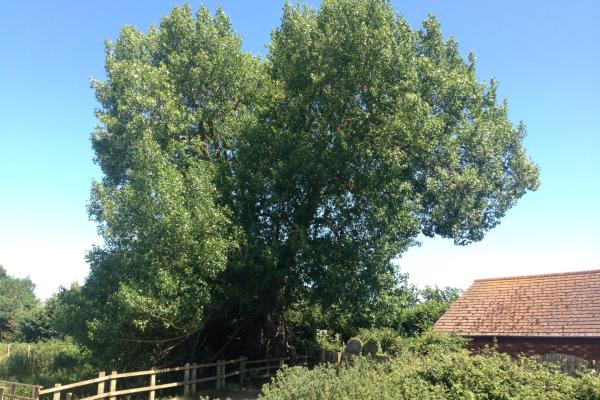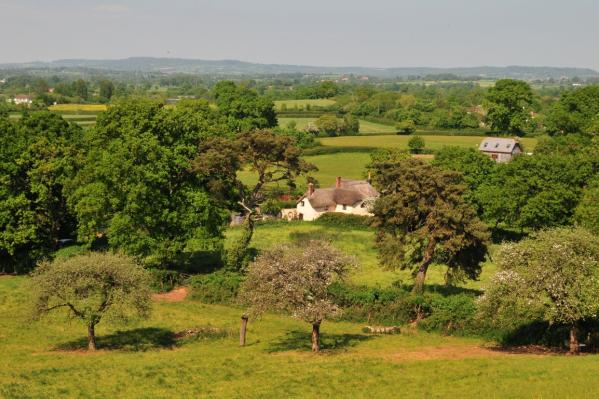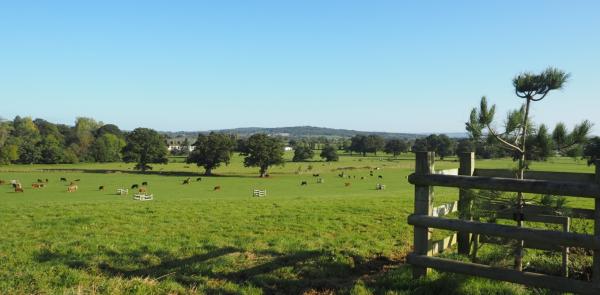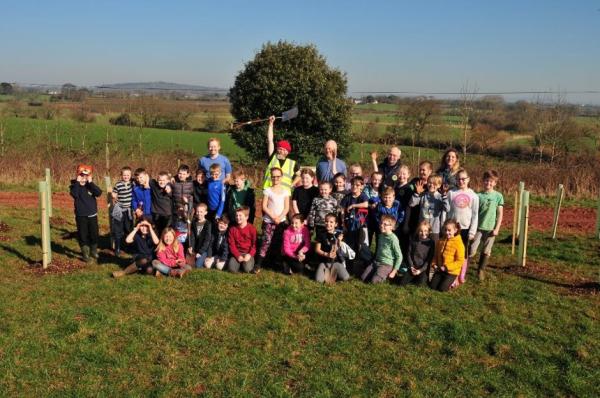The Clyst Valley’s landscape is gently rolling but rises to a high point of 167 metres at White Down Copse, part ancient woodland. From this and other hills it’s possible to getting sweeping views of the valley below. Ashclyst Forest forms the major area of woodland in an otherwise sparsely wooded landscape, due in part to the loss of hedgerow elms. However, individual trees, in fields, hedges, and parklands, are a very significant feature of the landscape. Killerton estate alone has more than 1,500 ancient or veteran trees, and there are some rare black poplars at Clyst St Mary.

The Clyst Valley is primarily agricultural, but also contains forest, woodland, orchards, parklands and villages. Elevated land of the Pebblebed Heaths, Ashclyst Forest and Beacon Hill forms its backdrop. Although outside the AONB designation, it is an attractive landscape containing many sites of nature conservation and cultural heritage interest.
The Regional Park contains designated nature conservation areas covering a range of wetland, grassland, parkland and woodland sites, including some Ancient Woodland. Killerton Park contains a geological SSSI (Site of Special Scientific Interest), and the River Clyst enters the internationally-designated Exe Estuary at Topsham.
The landscape around the villages of Clyst Hydon, Clyst St Lawrence, Aunk and Westwood is very intimate. There are thatched cottages and Barton farms (the home farm of the lord of the manor), and beautiful, tranquil river valleys. There is great potential for more natural habitat here and throughout the river system, and for greater public access along the footpaths that link up the villages.

Designated cultural heritage assets include Registered Historic Parks and Gardens at Killerton and Rockbeare, Conservation Areas in historic villages, numerous Listed Buildings (including fine churches and historic houses), and Scheduled Monuments (Dolberry Hill Hillfort, Killerton park pale, and the medieval bridge and causeway at Bishop’s Clyst).

Climate change and tree disease
Climate change is already affecting Devon’s weather, with milder wetter winters, warmer drier summers and more frequent and extreme weather events. The resulting floods, droughts and strong winds damage trees and buildings.
The altered conditions also enable new pests and diseases to thrive, exacerbating the threats posed by tree diseases. Ash dieback is already prevalent in the area, and other common trees such as oaks are vulnerable to infections. Tree loss can lead to major changes in the landscape, particularly when it affects large trees such as those in hedgerows and parklands. Trees and woodlands support extensive ecosystems, which are therefore also affected.
One of the most effective ways of both mitigating and adapting to climate change is the encouragement of new trees (either through planting or through natural regeneration). New trees store carbon, help reduce flooding, support biodiversity, contribute to more environmentally-friendly farming and promote wellbeing. When the right tree is planted in the right place, they can also enhance landscape character and distinctiveness.
The Clyst Valley Regional Park supports tree planting initiatives – replanting lost orchards and regenerating hedgerows and woodland. 3,500 broadleaved trees and shrubs have been planted through the ‘Great trees in the Clyst Valley’ initiative.

Some historic landscape features e.g. catch meadows, orchards and field boundaries may no longer be required and are lost through neglect. Our Green Infrastructure projects provide opportunities to restore historic landscape features, and raise awareness of the valuable historic assets and rural features which are often taken for granted.